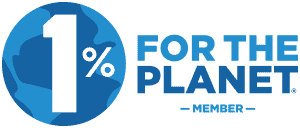Want an easy, comprehensive way to find out where your seafood comes from and its environmental impact?
The Marine Conservation Society has revamped its handy flagship tool, The Good Fish Guide, with brand new features to make it even easier to find sustainable seafood.
The redesigned guide is available on the Marine Conservation Society’s website and as an app, so you can download it and get an easily accessible, credible resource to find out just how sustainable your fish really is.

The growing awareness of unsustainable seafood
On behalf of the Marine Conservation Society, YouGov research found that:
- 75% of UK adults believe that unsustainable seafood has a large impact on the sea
- 43% of people who buy seafood think that sustainability is an important consideration when choosing or buying seafood
- 24% of UK adults who don’t buy sustainable seafood feel the process is ‘too complicated’ and don’t know what to look for
The Good Fish Guide aims to bridge the gulf between our growing awareness of the impact unsustainable seafood has on the sea and the feeling that finding sustainable alternatives is too complicated.
The tool’s new, more accessible format helps make decision making easier and provides straightforward sustainable seafood choices.

How The Good Fish Guide works
The Good Fish Guide has a simple search function that allows you to identify and filter seafood sustainability ratings.
Each species is rated depending on where and how it’s caught and grades it using a traffic light system.
Red rated seafood are the charity’s ‘Fish to Avoid’ whereas green identifies the most sustainable options and are considered the ‘Best Choice’ for consumers.
In order to get the most accurate and reliable ratings, the Marine Conservation Society carefully researches and reviews every species listed on the guide.
Wild-caught seafood ratings are based on:
- fish stocks
- how well fishing is being controlled
- what effect the fish stocks have on the environment including habitat damage and bycatch (other marine creatures like dolphins being unintentionally caught in fishing nets).

Farmed seafood ratings are based on:
- how sustainable the fish feed is
- animal welfare
- aquaculture control
- wider impacts on the environment such as pollution, parasites and overpopulation
Charlotte Coombes, Good Fish Guide Manager: “We’re so thrilled to share the new Good Fish Guide, which contains the same ratings, guided by science and analysed by experts, now in a more streamlined and easier-to-use format.
With thanks to generous funding and working in consultation with businesses and consumers, the new Good Fish Guide has been redeveloped and redesigned to make choosing sustainable seafood more accessible and even easier.”

More than just a grading system
Sustainable seafood grades aren’t just what the Good Fish Guide tool does.
You can also use it to find suggested sustainable alternatives which help you move away from unsustainable options so you’re not left in the lurch at mealtimes.
You can also explore a range of delicious recipes and how-to guides that give you a helping hand in the kitchen.
What’s more, both the app and website versions are updated with the same information so you can easily look up the sustainability of seafood on supermarket shelves as well as restaurant menus.
Visit the Good Fish Guide website to download the Good Fish Guide app.










